Studio Visit
Why Song Dong’s Beijing Studio in an Ex-Foundry Thoroughly Confused His Neighbors
The celebrated Chinese artist gave us a sneak peek at his process and workspace.
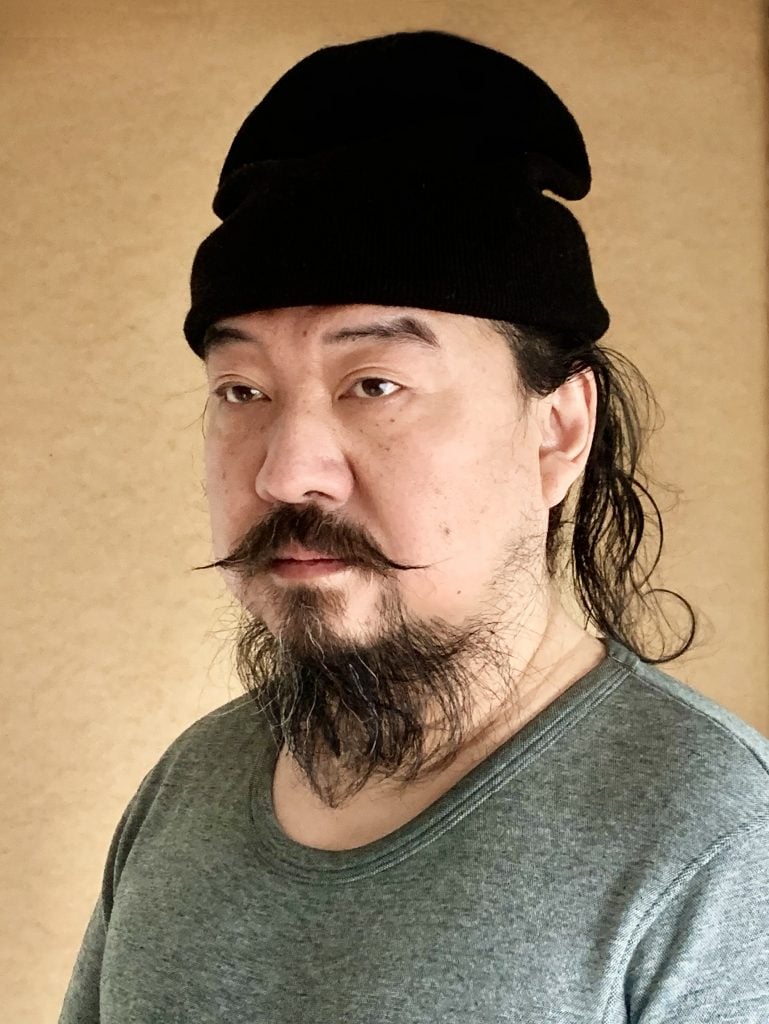
The celebrated Chinese artist gave us a sneak peek at his process and workspace.

Katie White

Song Dong doesn’t believe in setting boundaries between art and life.
The Chinese contemporary artist (b. 1966) works in a large-scale studio far from Beijing’s city center, filled with tools, found objects and ephemera, and an impromptu storage for many of his complete works. The studio, he gleefully admits, is his real living space—the artist and his wife the artist Yin Xiuzhen have a living space attached to the studio,
Rising up in the art world in the 1990s, Song’s multifaceted practice was shaped by the influential 85 New Wave Movement and Robert Rauschenberg’s assemblage and performance works. Today, he is celebrated for his poetic works—which encompass installation, assemblage, performance, painting, and video art—and which ask beguiling questions of memory and impermanence.
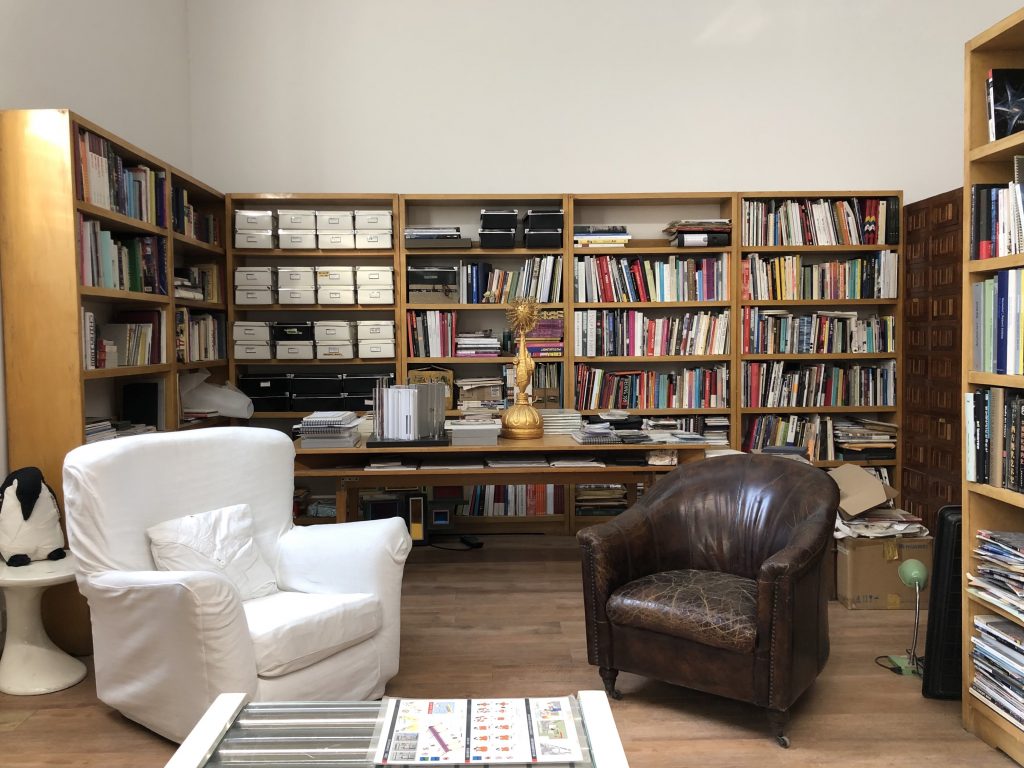
Courtesy of Song Dong and Pace, New York.
Song often considers how these intimate experiences are shaped by global realities and his investigations are often ongoing. In his Water Diary (1995–) the artist reflected on life’s transcience by writing in water on stone, only to watch it evaporate. Other works have explored consumption and desire. His 20025 installation Waste Not brought together over ten thousand items accumulated by the artist’s mother over five decades. Both a literal and psychological unpacking, the installation included quotidian objects including bottle caps, shoes, toothpaste tubes, and much more. Given the scope of such works, perhaps it’s not surprising then that when Song moved into his current studio his new neighbors thought the space had become a storage facility for detritus.
This past summer, the celebrated artist debuted new works in “Round” at Pace, New York, his first international exhibition since 2020. The works in the exhibition explored Chinese philosophy from a contemporary context and offered new understandings of ideas that figure prominently in his work. Many of these works incorporate the shape of the circle, which is richly symbolic in Chinese philosophy, as a central visual element. Recently we caught up with the famed Chinese artist at his studio where he told us about his studio’s wildly sculptural bathroom, the beauty of dust, and why he starts and ends the day with a walk around the studio.
Tell us about your studio. Where is it, how did you find it, what kind of space is it, etc.?
My studio is located in Yangzhen County, Shunyi District, Beijing. I found it through a friend’s introduction. It used to be a foundry. Beijing cleans up environmental pollution and drives all such foundries away from the city limit. The foundry walls are 6 meters high. Brick-concrete construction. Rock wool composited iron plate roof.
What made you choose this particular studio over others?
It’s hard to find a permanent studio in Beijing. My original studio had to be demolished because the environment needed to be cleaned up for the Beijing Winter Olympics, so we had to move out. I like working in a non-art district. I often create large installations which means more space is needed, so the studio is relatively far away. My neighbors didn’t know I was an artist and thought my studio was a storage for waste objects.
Do you have studio assistants or other team members working with you? What do they do?
Depending on the work, I ask different assistants and teams to help me realize them. Carpentry, welding, and oil painting are the usual kinds of expertise.
How many hours do you typically spend in the studio, what time of day do you feel most productive, and what activities fill the majority of that time?
I live in my studio and my philosophy is no boundaries/borderless. “Life is art, and art is life.”
What is the first thing you do when you walk into your studio (after turning on the lights)?
The first thing I do when I walk into the studio is to walk all over the studio.
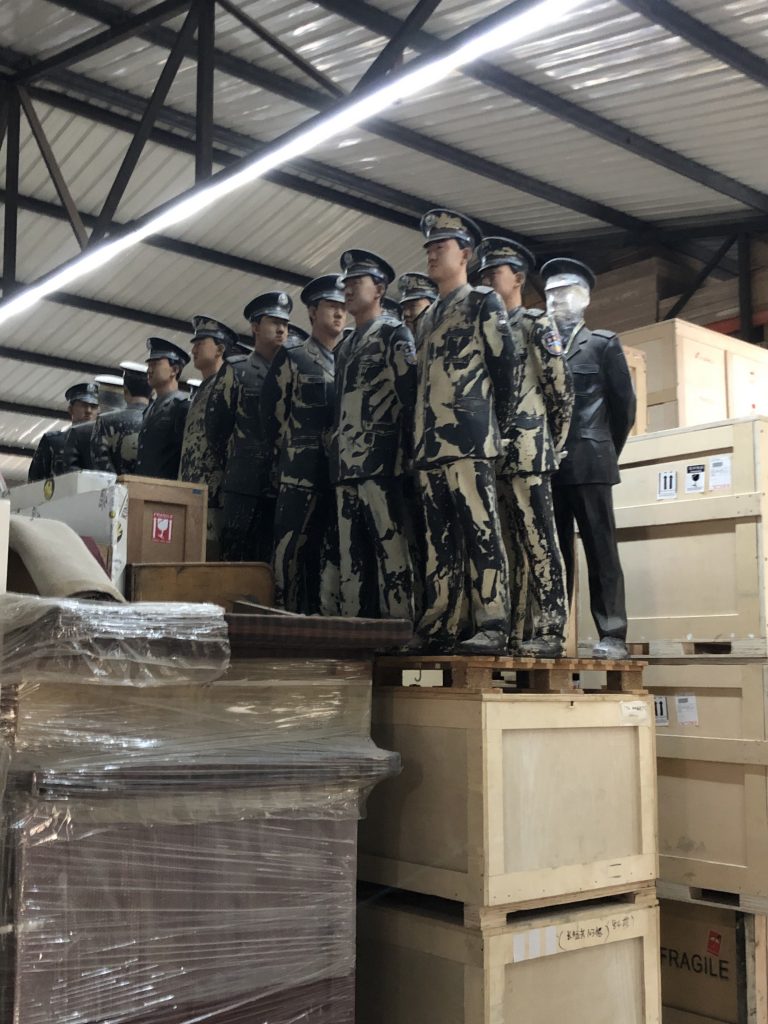
Storage area for older works. Courtesy of Song Dong and Pace, New York.
What is a studio task on your agenda this week that you are most looking forward to?
I am preparing daily objects with memories of the time I grew up for future video works.
What are you working on right now? Please send us a few smartphone shots of a work in progress—or photos of different works in various states of completion—in a way that you think will provide insight into your process.
I am making a space installation called “Doors” by collecting wooden doors from different families and different eras.
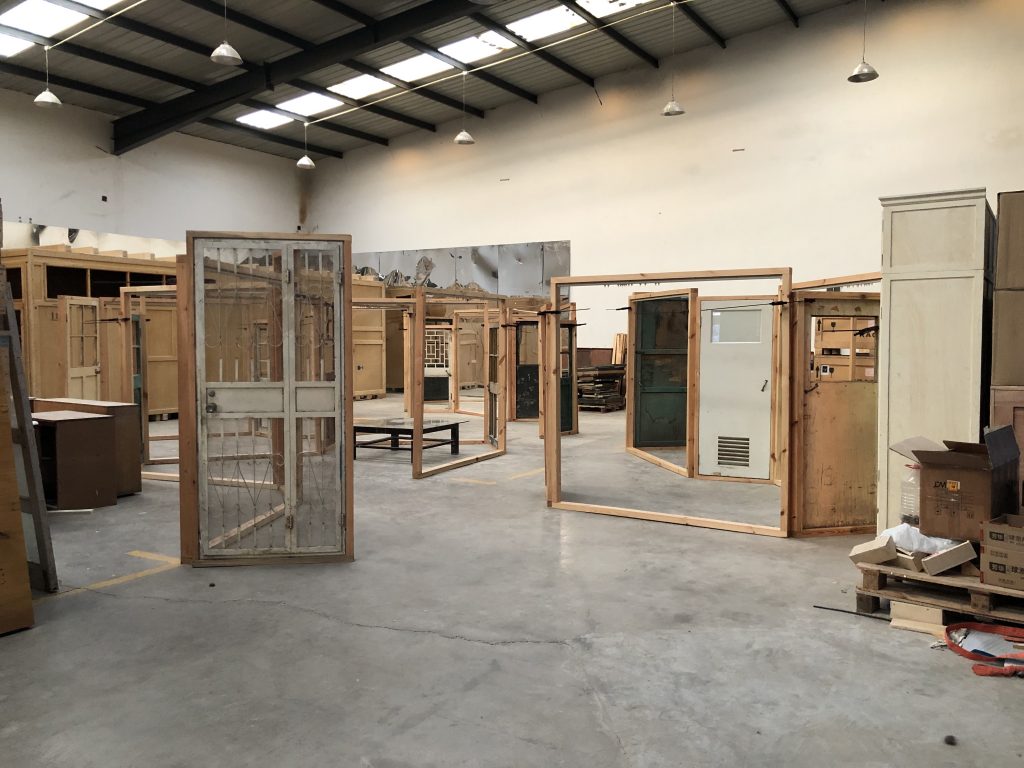
An in-progress look at his installation “Doors” 2023. Courtesy of Song Dong and Pace, New York.
What tool or art supply do you enjoy working with the most, and why? Please send us a snap of it.
I have a wide range of tools, mainly woodworking tools.
What kind of atmosphere do you prefer when you work? Is there anything you like to listen to/watch/read/look at etc. while in the studio for inspiration or as ambient culture?
I like quiet spaces where I can think. I used to face a white wall or read a book with no words.
When you feel stuck while preparing for a show, what do you do to get unstuck?
Nothing is demanding. Let nature take its course. Adversity is wealth. You do not need to get rid of this feeling. It is one of the sources of energy and wisdom.
What images or objects do you look at while you work? Do you have any other artist’s work in your studio? If so, please share a phone pic and tell the story behind it.
Thinking and arguing is my state of being at work. In our study, my wife Yin Xiuzhen’s works from her “Bookshelf” series are displayed. These works, which she created from the used clothes she collected from different people, are books forged from different people’s experiences. They are an important part of our study.
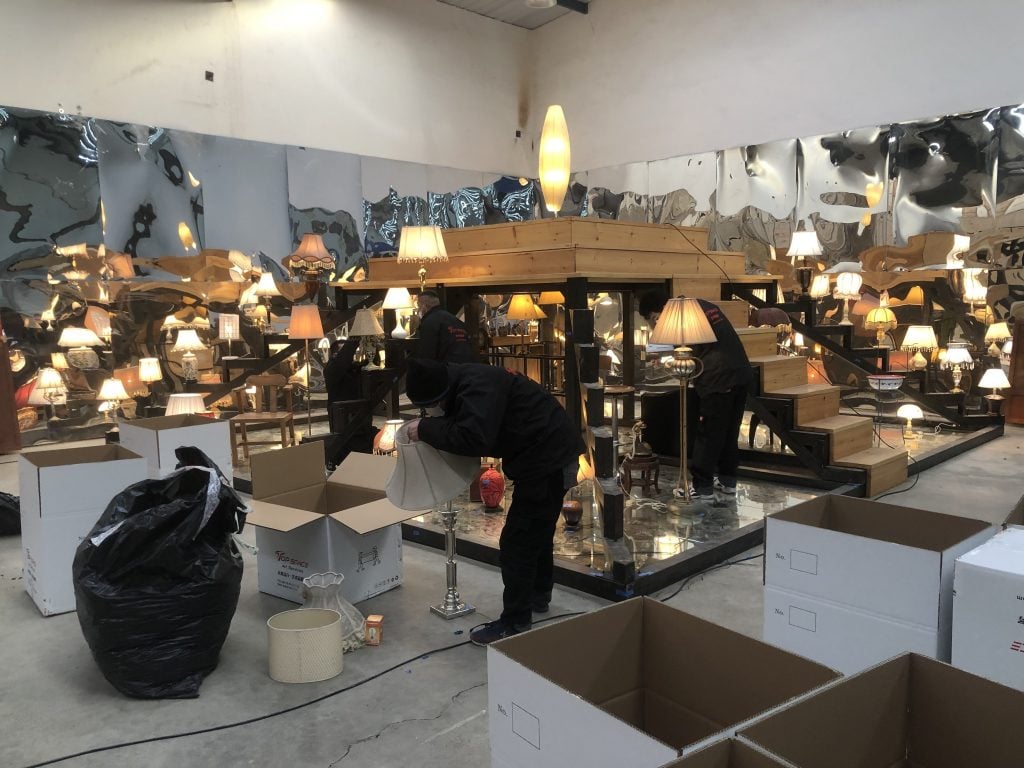
Courtesy of Song Dong and Pace, New York.
What’s the last museum exhibition or gallery show you saw that really affected you and why?
“Paris Moderne 1914–1945: Architecture, Design, Film, Fashion” at PowerStation of Art (PSA) in Shanghai, a retrospective of the emergence and prosperity of modernity in Paris during the Golden Age from a richly interwoven perspective. It inspired me to rethink the world today.
This exhibition, though, is about the relationship between modernism, creativity, and society between the two World Wars. But I think this exhibition is very contemporary and makes me re-examine the non-modernism of modernism. Different times have very different understandings and interpretations of the same thing.
Where do you get your food from, or what do you eat when you get hungry in the studio?
I buy food in the village market and cook in the kitchen in the studio. Even after moving the studio, the design of the kitchen remains the same.
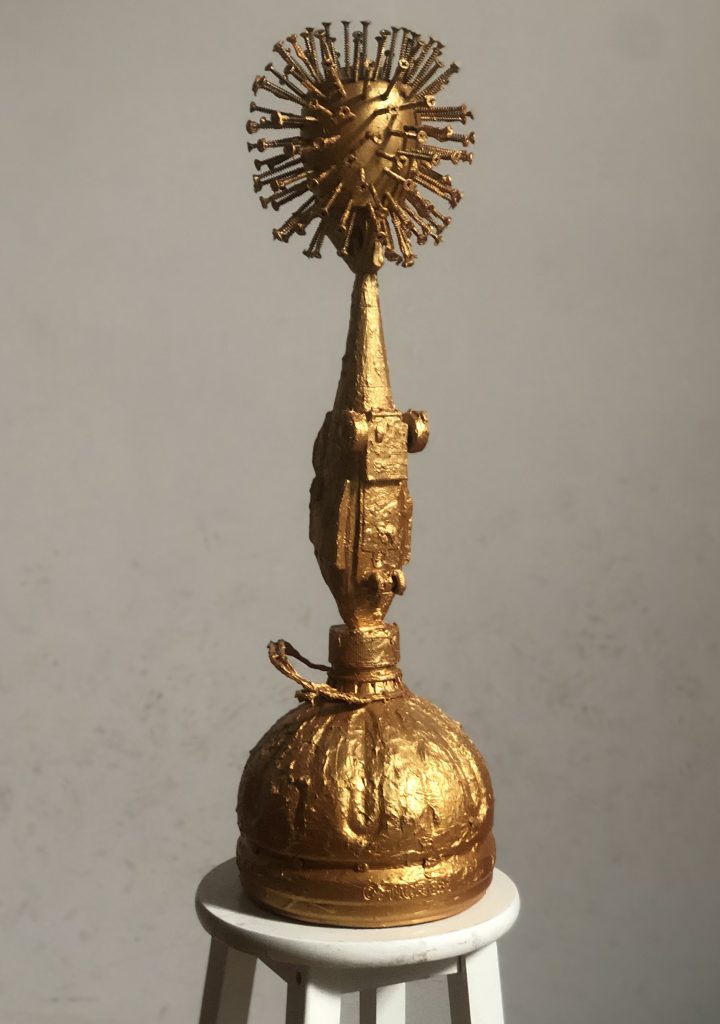
Song Dong’s Omicron Cup.
Is there anything in your studio that a visitor might find surprising?
The Toilet and Omicron Cup.
The Toilet is a work of mine, a toilet that can actually be used. Visitors are surprised and take pictures when they go to the toilet. The creation of Omicron Cup began at the beginning of 2022 when Beijing just found the first case of Omicron virus carriers. I see Omicron as the hero of the end of the pandemic. The virus with its own will to protect itself, but it also completed the possibility of coexistence with human beings. This is a trophy made for Omicron. It is composed of daily objects with metaphors and was shown in 2022 in Beijing with a public performance by a large number of viewers who painted the work with gold paint and completed it through public participation.
What is the fanciest item in your studio? The most humble?
The most beautiful thing is dust, the most inconspicuous is also dust. “No such thing as the Budhi tree, nor a mirror stand that can be. There is nothing in the first place, whereon can dust and dirt creep?”
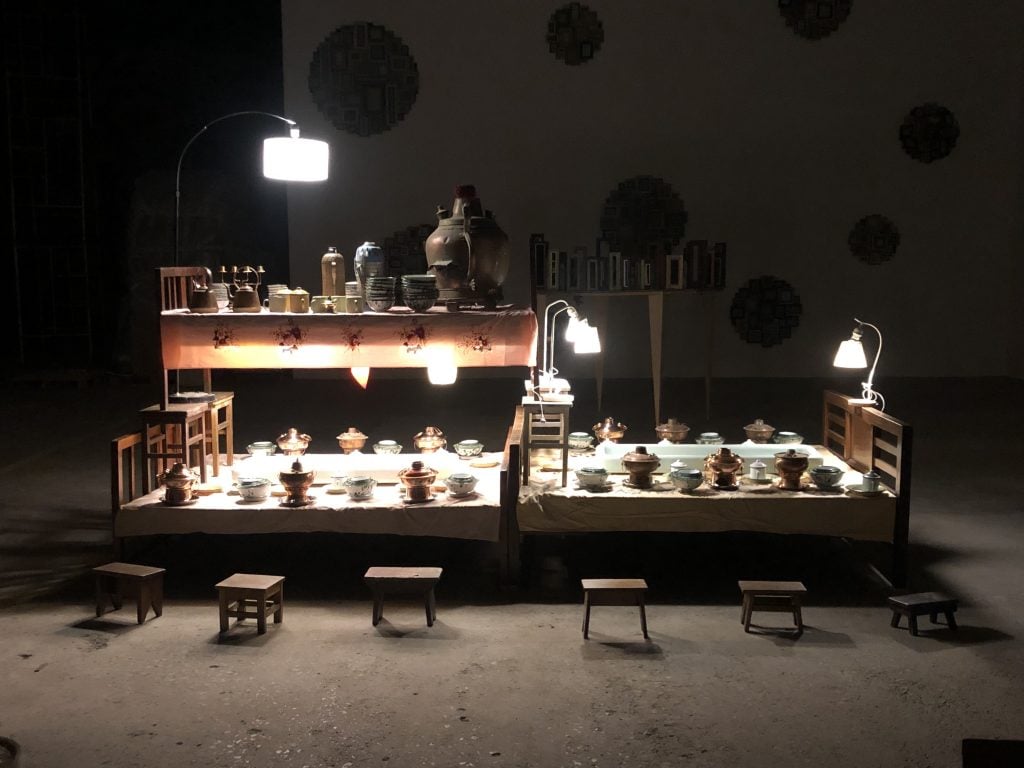
Courtesy of Song Dong and Pace, New York.
How does your studio environment influence the way you work?
My work accumulates into a “perception field,” where the studio is both a place to work and a place to live. I use the borderless way of life to influence the borderless way of creation.
Describe the space in three adjectives.
Plain, every day, inconsistent.
What’s the last thing you do before you leave the studio at the end of the day (besides turning off the lights)?
Walk around the studio again.
What do you like to do right after that?
Sleep.
More Trending Stories:
Conservators Find a ‘Monstrous Figure’ Hidden in an 18th-Century Joshua Reynolds Painting
A First-Class Dinner Menu Salvaged From the Titanic Makes Waves at Auction
The Louvre Seeks Donations to Stop an American Museum From Acquiring a French Masterpiece
Meet the Woman Behind ‘Weird Medieval Guys,’ the Internet Hit Mining Odd Art From the Middle Ages
A Golden Rothko Shines at Christie’s as Passion for Abstract Expressionism Endures
Agnes Martin Is the Quiet Star of the New York Sales. Here’s Why $18.7 Million Is Still a Bargain
Mega Collector Joseph Lau Shoots Down Rumors That His Wife Lost Him Billions in Bad Investments